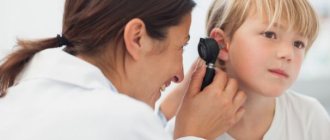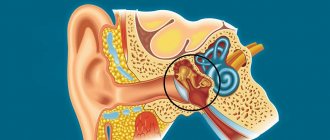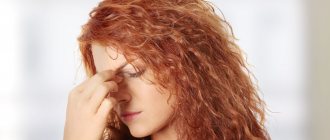Fungal otitis (otomycosis) is an inflammation of the ear, in which parts of the shell are affected not by viruses and bacteria, but by yeast-like molds. Most often, this pathology is observed on the walls of the external ear canal, the skin of the auricle, the eardrum, and the middle ear cavity. And it occurs quite often: otomycosis accounts for about 19% of cases among adults and about 27% in children in the total mass of diagnosed otitis.
Related article: Take care of your ears. How to swim correctly so as not to get otitis media?
Pathogens of otomycosis
The main pathogens include various types of fungi. They usually spread throughout the ear, and even on the eardrums. The causes of ear fungus are certain factors that contribute to the spread:
- Humidity.
- Long-term use of antibiotics.
- Previous ear diseases.
The main factor in development is the injured mucous membrane. Therefore, it is worth noting that people who often use cotton swabs to clean their ears most often develop fungal otitis media.
You should not clean your ears with cotton swabs too often - this is harmful to health and contributes to the development of otomycosis.
High humidity and allergies
Mushrooms surround humans everywhere. And they are not always visible to the eye: spores easily move in space, remaining unnoticed. They settle on the skin, enter the body and become fixed there. They are especially active in cases where a person has reduced immunity. You should also remember about favorable conditions for the development of such pathology. Among them:
- Long-term treatment with antibacterial drugs
- High humidity. For example, water constantly accumulates and retains in the ear
- Allergic reactions
- Eczema of the skin in the ear
All this contributes to the introduction of infection into wounds and the creation of favorable conditions for their reproduction. Also, fungal otitis media can develop against the background of injuries to the mucous membrane of the ear, the presence of a foreign body in the auricle, or diabetes mellitus.
Why does my ears ring? 5 reasons for hearing problems Read more
Symptoms
There are a number of symptoms that can, to a certain extent, prevent the disease:
- Itching in the ear, which can be either constant or occur periodically.
- Headache accompanied by blurred vision.
- Wax plugs in the ears.
- Ear congestion.
- Discharge from the ear, which is characterized by its color: brown or grayish.
- An increase in temperature if the disease has already passed the first stage and is developing further.
Fungal otomycosis
Causes of the disease
Fungal infection - causes of ear candidiasis
The cause of the disease lies in yeast-like fungi of the genus Candida. There are more than 150 species of fungi of this genus; they live in soil, air, water and live on the skin of a healthy person. Candida belongs to the opportunistic fungi - they lead to disease only in the presence of pathogenic factors.
How does infection occur: the fungus attaches to the skin of the ear and begins to actively multiply, forming colonies. Then the microorganism begins to penetrate deep into the skin, affecting the epidermis, which leads to disruption of the skin barrier function and the development of the inflammatory process.
Factors influencing the body's resistance to fungal invasion:
- A chronic, sluggish disease that reduces the body's immune response (tonsillitis, sinusitis, rheumatoid arthritis, gastric and duodenal ulcers).
- Immunodeficiency state (for example, after suffering from mononucleosis).
- Hormonal disorders (thyrotoxicosis).
- Metabolic disorders (diabetes mellitus).
- HIV infection.
- Tumor diseases and immunodeficiency after radiation and chemotherapy.
- Tuberculosis.
- Immunosuppression caused by taking corticosteroid drugs (systemic lupus erythematosus, rheumatoid arthritis).
- Taking large doses of antibiotics.
Traumatic damage to the skin of the ear is of great importance in the development of ear candidiasis, since trauma contributes to the rapid germination and proliferation of fungi. Active use of cotton swabs to clean the ear canal often results in scratches and abrasions in the ear, which, when accompanied by a fungal infection, leads to candidal otomycosis.
Frequent ear hygiene also leads to the development of the disease: many people try to wash and clean their ears every day.
Such manipulations lead to the complete removal of sulfur, which protects the skin from harmful external factors and microbes. But yeast-like fungi do not always lead to external otitis. To maintain their vital functions, several important factors are required: air, high humidity and a comfortable temperature. Fungi of the genus Candida are aerobes and cannot live without air. They also love high humidity and therefore begin to actively reproduce in the ear after bathing.
This fact is associated with the spread of the disease among sauna and bathhouse workers, dishwashers and housewives who wash a lot of dishes by hand. The human body temperature is acceptable for fungi, but with inflammation and an increase in local temperature, their growth increases. Since this group of microorganisms loves polysaccharides, pastry chefs and workers in confectionery factories often suffer from otomycosis.
Symptoms of the disease
Itching and discharge are signs of ear candidiasis
Candidal otomycosis is characterized by scant symptoms. The patient may complain of discomfort in the ear, nagging pain, lumbago, noise and congestion. But most often a person turns to an otolaryngologist with severe unbearable itching. The desire to scratch the ear is associated with irritation of nerve receptors by mushrooms and desquamation of the epidermis.
Pain with mycosis is much less common, in contrast to external otitis of another etiology. But if pain is present, it often causes inconvenience in the evening and at night. Many patients experience high sensitivity of the ear when trying to touch or pull back the auricle. Patients often complain of moisture and fluid in the sore ear.
With a long course of candidal otomycosis, ear congestion appears due to mechanical blockage of the ear canal by desquamated epidermal masses and fungal mycelium. Often, patients repeatedly come to the ENT specialist, have their ears washed with distilled water and sent home without suspecting an infection. Such manipulation can aggravate the process and activate the growth of fungal colonies.
If you repeatedly remove a white plug with loose wet masses, you must take a smear for mushrooms.
The long-term chronic course of the disease causes headaches on the side of the affected ear and a slight feeling of fullness in the ear. In the presence of chronic purulent otitis with a defect in the eardrum and periodic discharge from the ear, candidiasis is more pronounced. There is a shooting pain in the ear, behind the ear in the mastoid area, a rise in temperature, and increased suppuration when fungi grow into the middle ear.
Types of fungal otitis (otomycosis)
There are several types of otomycosis. The name of the species depends on where the disease occurs, and specifically where the inflammatory process occurs. Otolaryngologists are divided into 4 types:
- External form. When the external auditory canal is damaged. This form is more common than others.
- Maringitis. This means that the eardrum is inflamed, but this course of the disease is quite rare.
- Average otomycosis. The middle ear cavity is affected.
- Postoperative fungal otitis. Characterized by the fact that it spreads after surgical interventions.
Diagnostics
Reliable data on the variety of fungi, their quantity and sensitivity to drugs is obtained with the help of competently carried out comprehensive diagnostic measures in a clinic setting.
In addition to a visual examination, laboratory tests are absolutely necessary: specific - microscopic (seeding of discharged exudate), express diagnosis of the fungus from the outside, examination for the presence of bacteria, as well as general - blood and urine tests.
We would like to warn you that you do not need any special preparation to visit a doctor. It is enough not to carry out any procedures in the ear cavity on your own and not to take pills.
Diagnosis of otomycosis or how to identify fungal otitis media
To determine the nature of the lesion, otolaryngologists resort to microscopic examinations. To do this, a detachable part is taken from the ear, but the collection should be done with special attention, since if you take the analysis from the wrong place, it will most likely not be possible to identify the fungus.
Structure of the ear To determine the disease, the doctor will have to resort to examining the patient and identifying any abnormalities in the ear. During perforation, if a parasite is present, discharge from the ear may be detected.
What does the ear look like when examined?
Examination of the ear cavity by an otolaryngologist
The skin of the ear canal is dry, cracked, and there are whitish or yellow-white fatty masses in the ear canal. In most cases, inflammation is localized in the bony part of the ear canal and on the eardrum. The skin is moderately hyperemic; in advanced cases, roller-like thickening of the skin and bright redness in the bony area are noted. Serous clear fluid is also visualized in the ear. More often, the eardrum is only slightly hyperemic, but in severe cases, infiltration appears and identifying marks disappear.
There is a second version of the picture upon examination: the external auditory canals are dry, slightly hyperemic, the passage is not narrowed. Dry white films are observed throughout the skin, which are easy to remove. The membrane is either not involved in the process or is slightly hyperemic.
If the patient does not seek treatment for a long time and there is a pronounced decrease in immunity, the fungus can spread beyond the ear. The skin behind the ear, chin, neck and chest is affected.
Mycoses in this case are characterized by copious discharge from the ear in the form of cheesy masses. Otomycosis does not cause plugs in the middle ear because the discharge is too liquid.
The skin of the ear is hyperemic and abundant cheesy masses are also visible on it.
Often there are several perforations in the eardrum. There are small granulations on the membrane itself, which can be easily removed with a probe and cotton wool.
Useful video: the main causes of itching in the ears
Often, after extensive surgery on the ear, suppuration from the ear does not stop and epithelization occurs extremely slowly. Powerful antibacterial therapy fails and the patient continues to constantly go to the otolaryngologist with complaints of noise in the ear, discharge, itching and pain. Often the patient cannot sleep on the operated ear due to pain and increased sensitivity of the auricle.
When examined by a doctor, the surgical cavity is completely filled with cheesy discharge; the picture resembles a cholesteatoma lesion. When you try to clean the cavity, the masses come off easily, piece by piece, they are white or yellow. There is often a specific unpleasant odor.
Newborns and young children from 1 to 5 years of age are more susceptible to candidiasis among children. Due to the high reactivity of the body, symptoms of inflammation clearly manifest themselves: the temperature rises, the face turns red, the child rubs his ears, and constantly turns his head to the side.
Copious cheesy discharge appears from the ear. The ear canal swells sharply, the skin is macerated, bluish, and hot to the touch. Often the process quickly spreads to the auricle and the skin around the ear.
- Examination by an otolaryngologist.
- Collecting smears for fungal infection.
Smears should be taken before treatment and after treatment.
Treatment of fungal otitis
Fungal otitis media should be treated with antimycotic agents. However, before using the drugs, you need to rinse your ear with anti-fungal agents. A number of drugs can be used for such purposes:
- Nystatin.
- Quinosol.
- Amphotericin.
- Burov's liquid.
Before rinsing the ear, it is necessary to free it from wax and other formations. In addition to using antifungal drugs, you need to establish the cause of the disease and understand how to get rid of it. To do this, you should increase your immunity, which means stopping taking antibiotics. It is also important to fully recover from diseases that weaken the immune system. Despite the fact that the process of treating otomycosis is complex, it is still possible to get rid of the disease. In most cases, treatment is successful, and only a few percent may experience complications. During the treatment process, it is important to choose the right drugs, since each drug treats a specific type of fungus.
The main thing is to contact the clinic in time to receive help from a qualified specialist.
Effective medicines
Most drugs from the antimycotic group have a wide range of effects and therefore can be used for any type of pathogen. The following drugs are considered the most effective:
The regimen for using a particular medicine for fungal otitis is determined only by a specialist.
A multicomponent medicine in the form of drops is considered one of the most effective for various ear diseases. The drug helps to simultaneously relieve pain, eliminate discomfort and combat the development of pathogens, including fungi.
Treatment of otitis at home
Rose decoction
To prepare the decoction you will need about 20 rose petals. You need to put the petals in a glass and pour strong boiling water over them, after 40 minutes, squeeze out the petals and throw them away. Add a couple of drops of rose oil to the infusion and leave in a water bath. As soon as half has evaporated, the decoction for otitis media is ready.
Rose decoction The medicine must be used for 2 weeks, every day before bedtime.
Hydrogen peroxide in the ear for otitis media
It is better to use this method of treatment only for external otitis. You should buy the solution at any pharmacy. During production, it should be diluted with ordinary water in a 1:1 ratio.
Dilution is mandatory, otherwise there is a risk of burning your ear.
Every day before going to bed, you need to drip 4-5 drops of the solution; when instilled, you may hear a slight hissing sound. As soon as it stops, you can bury the other ear.
Hydrogen peroxide in the ear It is recommended to use hydrogen peroxide for otitis media for no more than 7 days. If the pain does not go away during this period, then the infection is deeper and you cannot do without the help of a doctor!
Boric acid for otitis media
This remedy is the most popular for the treatment of fungal otitis media in the ear. You can buy the product at any pharmacy; it has no particularly dangerous contraindications. To use the method, you need to make cotton pads and soak them in acid, squeeze out the liquid and put them in your ears for 60 minutes. Before use, boric acid is slightly heated; it is necessary to achieve the optimal temperature, since the cotton swab should not be very hot or cold. It is best to use before and after bedtime; if a week of treatment has passed and the pain does not subside, you should consult a doctor, since most likely the disease is more serious.
Important! You should not pour boric acid into your ear; you should always use a cotton swab or cotton swab.
Propolis tincture for otitis media
A regular propolis tincture, which can be bought at a pharmacy or made at home, can provide an analgesic effect for otitis media. The application of the method is as follows: every four hours you need to instill 2-3 drops of propolis into the sore ear, and cover it with a cotton swab and try not to move for about 15 minutes, it is better, of course, to lie down at this moment. However, this method can harm the mucous membrane, so the infusion can be mixed with olive oil. If after 2 weeks of using propolis for otitis media there is no result, then you need to go to the hospital.
Reviews
In order to completely overcome the development of a fungal infection in the ear canal, it is important to correctly determine the cause of infection and the type of causative agent of the disease. Only an ENT doctor can do this. According to patient reviews, otomycosis is highly treatable at the local level with timely seeking medical help. Antimycotic drugs, which have a wide range of therapeutic effects, help suppress the development and proliferation of fungi. The duration of treatment is 3-6 weeks.
Fungal otitis in official medicine is called otomycosis, which is translated from Latin as fungus in the ear. It immediately becomes clear that the disease directly affects the tissues of the auricle, including the ear canal, as well as the skin behind the ear.
In most recorded cases, the organs of the outer ear are involved; less often, the disease affects the middle and internal areas. Therefore, when analyzing the disease, external fungal otitis is mainly considered.
Fungal otitis media and postoperative otitis media, as well as meningitis, are the work of professionals and can only be treated in an inpatient setting. The sore can affect both hearing organs at once or only one.










